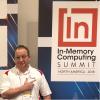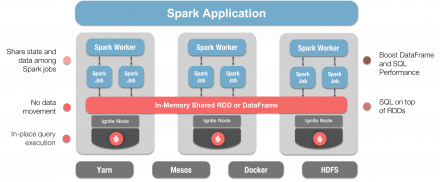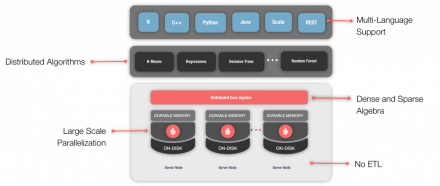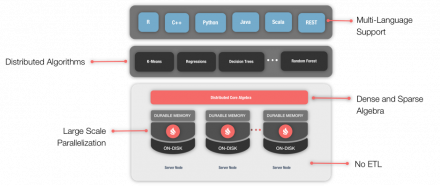At a recent gathering of the Moscow Apache® Ignite™ Meetup, I talked about open-source communities, how to become a contributor and a committer and some reasons why you should participate.
Specifically, I was talking about the story of the Apache Ignite community. The limited time of the talk did not allow me to give more examples, so that was the inspiration for this post -- which is by…
The GridGain Systems In-Memory Computing Blog
GridGain's London-based technology evangelist Akma Chaudhri will deliver a live one-hour webinar Sept. 25 that will be of great value to anyone working with Big Data in a bank or financial institution. It's titled "Apache® Ignite™ + GridGain: powering up banks and financial institutions with distributed systems" and will start at 10 a.m. BST (that's 2 a.m. PDT and 5 a.m. EDT).
Don't worry if…
In-memory computing is a journey that requires up-front planning and preparation to complete. Companies often start with caching to add speed and scale to existing applications. But before you know it, you're building new hybrid transactional/analytical processing (HTAP) applications, new streaming analytics applications, or even starting to implement machine and deep learning. If you don't…
Learn how Kubernetes can orchestrate a distributed database or in-memory computing solutions using Apache® Ignite™ as an example.
Denis Madga, GridGain's director of product management, took one of his most popular meetup talks and turned it into a webinar on July. And he recorded it! His talk is available for playback (along with his slides) here.
In-memory computing technologies such…
GridGain technology evangelist Akmal Chaudhri delivered the second webinar of his popular highly technical two-part series for software developers and architects on Aug. 28 titled, "In-Memory Computing Essentials for Architects and Developers: Part 2."
This free webinar was recorded and is available for playback (and the slides for download) here.
Akmal continued his introduction of more of the…
With real-time streaming analytics there is no room (or time) for staging or disk.
Denis Magda, GridGain's director of product management and Apache Ignite PMC chair, delivered an excellent webinar Sept. 12 detailing the best practices used for real-time stream ingestion, processing and analytics using Apache® Ignite™, GridGain®, Apache Kafka™, Apache Spark™ and other technologies.
The webinar…
In this two-part series, we will look at how Apache® Ignite™ and Apache® Spark™ can be used together.Let's briefly recap what we covered in the first article.Ignite is a memory-centric distributed database, caching, and processing platform. It is designed for transactional, analytical, and streaming workloads, delivering in-memory performance at scale.Spark is a streaming and compute engine that…
In the previous article in this Machine Learning series, we looked at k-NN Classification with Apache® Ignite™. We’ll now look at another Machine Learning algorithm and conclude our series. In this article, we’ll look at K-Means Clustering using the Titanic dataset. Very conveniently, Kaggle provides the dataset in a CSV form. For our analysis, we are interested in two clusters: whether…
In the previous article in this Machine Learning series, we looked at Linear Regression with Apache® Ignite™. Now let’s take the opportunity to try another Machine Learning algorithm. This time we’ll look at k-Nearest Neighbor (k-NN) Classification. This algorithm is useful for determining class membership, where we classify an object based upon the most common class amongst its k nearest…
In the previous article in this Machine Learning series, we looked at the Apache® Ignite™ Machine Learning Grid. Now let’s take the opportunity to drill-down further into some of the Machine Learning algorithms that are supported in Apache Ignite and try out some examples using popular datasets.
If we search for suitable datasets to use, we can find many that are available. However, one dataset…












